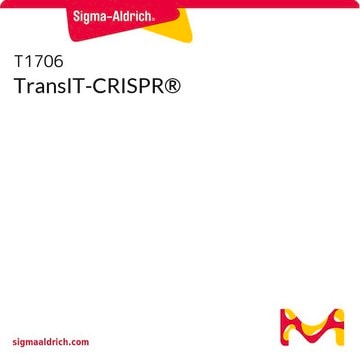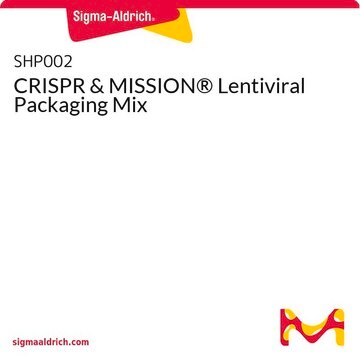CRISPR
CRISPR/Cas9 Products and Services
Design and order CRISPR gRNA, Cas9, screening libraries, controls and companion products. Formats include plant, lentivirus, IVT-RNA, plasmid, synthetic, and protein.
Synonym(s):
CRISPR, CRISPRs, Cas9, Crispr RNA, Crispr/Cas System
Sign Into View Organizational & Contract Pricing
All Photos(1)
About This Item
UNSPSC Code:
12352200
Recommended Products
recommended
related product
Product No.
Description
Pricing
Customers Also Viewed
Stephen J Pettitt et al.
Nature communications, 9(1), 1849-1849 (2018-05-12)
Although PARP inhibitors (PARPi) target homologous recombination defective tumours, drug resistance frequently emerges, often via poorly understood mechanisms. Here, using genome-wide and high-density CRISPR-Cas9 "tag-mutate-enrich" mutagenesis screens, we identify close to full-length mutant forms of PARP1 that cause in vitro
Ari E Friedland et al.
Nature methods, 10(8), 741-743 (2013-07-03)
We report the use of clustered, regularly interspaced, short palindromic repeats (CRISPR)-associated endonuclease Cas9 to target genomic sequences in the Caenorhabditis elegans germ line using single-guide RNAs that are expressed from a U6 small nuclear RNA promoter. Our results demonstrate
Haoyi Wang et al.
Cell, 153(4), 910-918 (2013-05-07)
Mice carrying mutations in multiple genes are traditionally generated by sequential recombination in embryonic stem cells and/or time-consuming intercrossing of mice with a single mutation. The CRISPR/Cas system has been adapted as an efficient gene-targeting technology with the potential for
Hirotaka Ebina et al.
Scientific reports, 3, 2510-2510 (2013-08-27)
Even though highly active anti-retroviral therapy is able to keep HIV-1 replication under control, the virus can lie in a dormant state within the host genome, known as a latent reservoir, and poses a threat to re-emerge at any time.
Takehito Kaneko et al.
Scientific reports, 4, 6382-6382 (2014-10-02)
Engineered endonucleases, such as zinc-finger nucleases (ZFNs), transcription activator-like effector nucleases (TALENs), and the clustered regularly interspaced short palindromic repeat (CRISPR)/CRISPR-associated (Cas) system, provide a powerful approach for genome editing in animals. However, the microinjection of endonucleases into embryos requires
Our team of scientists has experience in all areas of research including Life Science, Material Science, Chemical Synthesis, Chromatography, Analytical and many others.
Contact Technical Service

















